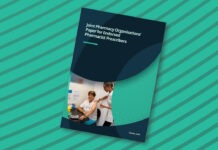Case scenario
Mrs Wilson, mother to 4-month-old Alex, visits you at the local community pharmacy, concerned about his recent cold-like symptoms. After taking a history and noting that his symptoms are mild and began 2 days ago, you recommend that Mrs Wilson use supportive care by offering her ibuprofen, and you encourage adequate hydration through regular feeds. You are aware that RSV is circulating, and you note Alex’s high risk of RSV-associated complications if infected, due to his age. You reinforce the importance of monitoring for breathing difficulty, wheezing or rapid breathing, and advise Mrs Wilson to take Alex to the hospital immediately if they develop.
Learning objectivesAfter reading this article, pharmacists should be able to:
Competency standards (2016) addressed: 1.1, 1.4, 1.5, 2.2, 3.1, 3.5 Accreditation number: CAP2505DMCS Accreditation expiry: 30/04/2027 |
Already read the CPD in the journal? Scroll to the bottom to SUBMIT ANSWERS.
Introduction
Respiratory syncytial virus (RSV) is a common and highly contagious respiratory virus that infects the airways, lungs and ears, causing illnesses ranging from mild colds and ear infections, to severe conditions such as bronchiolitis or pneumonia.1–3 Management of RSV predominantly focuses on supportive care.2 Pharmacists play a vital role by providing advi
THIS IS A CPD ARTICLE. YOU NEED TO BE A PSA MEMBER AND LOGGED IN TO READ MORE.



 PSA Vice President Professor Mark Naunton MPS[/caption]
PSA Vice President Professor Mark Naunton MPS[/caption]




 Dr Louise Schaper at PSA25[/caption]
Dr Louise Schaper at PSA25[/caption]








